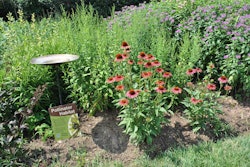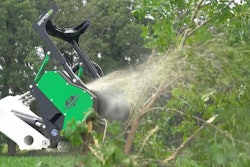 Keeping with the theme of tea, customers may appreciate tea cup shaped planters in their tea gardens.
Keeping with the theme of tea, customers may appreciate tea cup shaped planters in their tea gardens.Photo: Pixabay
With the summer days slowly winding down and the promise of fall right around the corner, what better way for your customers to spend those cooler evenings than with a piping-hot cup of tea?
While it’s true they could easily purchase tea at their local grocery store, another alternative to discuss with them is the possibility of creating a tea garden. This gives customers the opportunity to add another beautiful facet to their yard, while also allowing them access to their favorite tea fixings whenever they please.
For customers who either don’t care for warm tea or are still experiencing warm weather, fear not. Tea gardens can be used to make warm tea or iced tea depending on the region you service.
Find a spot
Finding a spot of tea…sorry, a spot for the tea is the first step in creating a tea garden. Talk to your customers about their expectations for the space, such as how big they would like it and if they would prefer it to have a more secluded or open look.
Also, take into consideration the area in which your customers live. If their home is prone to more sunlight and exposure, talk to them about partial shading options to make their garden inviting for sitting and relaxing, while leaving enough sun to nourish the plants.
Tea gardens can be as big or as small as your customer would like, so when it doubt start small and leave room for expansion in case they decide to add more later.
What to plant?
As stated before, the options are seemingly endless when it comes to what should be planted in a tea garden, but there are a few popular ones found in most tea gardens.
Mint is one of the most commonly known herbs, and it is the perfect addition to a tea garden. There are several types of mint flavors such as peppermint, apple mint, spearmint, or pineapple mint, and they all will grow well almost anywhere as long as they receive a sufficient amount of water. To keep them reigned in, it is suggested that mint is grown in pots. Mint helps improve digestion, and when mixed with warm water and honey, it can help relieve coughs and ensure a good night’s sleep.
German chamomile has daisy-like flowers and medicinal properties, but it is most commonly used as a calming drink or as a sleep aid. Chamomile tea has also been used to treat mouth ulcers, hay fever, and other respiratory inflammations. German chamomile is an annual often found in wild, dry areas, and drought-like conditions produce the most flavorful herb.
Lemon balm is similar in appearance to mint, but it gets its name from the lemony scent it gives off. When made into tea, lemon balm can have a calming effect on the nerves, as well as in relieving anxiety and restlessness. This herb is sometimes regarded as an excellent remedy for hyperactivity and restlessness, and it is said to help relieve tension headaches. It can be grown in gardens or containers, but refrain from fertilizing since it is a vigorous and rapidly spreading herb.
Thyme is a member of the mint family, and thyme tea is excellent for helping ease stomach problems. Thyme has powerful antimicrobial properties against a wide variety of pathogens, and it can also be used to treat respiratory tract infections like laryngitis and bronchitis. Thyme can be grown in both gardens and containers, but it does perform best in poor soil and dry conditions.
Design options
Tea gardens should be planted in a sunny area with well-drained soil; locations should get at least six hours of sunlight per day. If your customers don’t have soil in their yards that drains well enough, consider building raised beds for them instead.
Once the actual garden is set in place and the herbs are chosen, many other design liberties can be taken. One popular idea that’s surfaced in tea gardens is the appearance of actual tea cups, tea cup-shaped pots, or tea kettles to hold the herbs or plants.
These containers can be interspersed on the ground to blend in with the surroundings, or they can be incorporated into a shelving unit to add a focal point to the garden. Creating a living wall of herbs in teacups can also give your customers a fun activity to work on with their family, and it gives them a chance to put their own taste in patterns and shapes in the garden.










